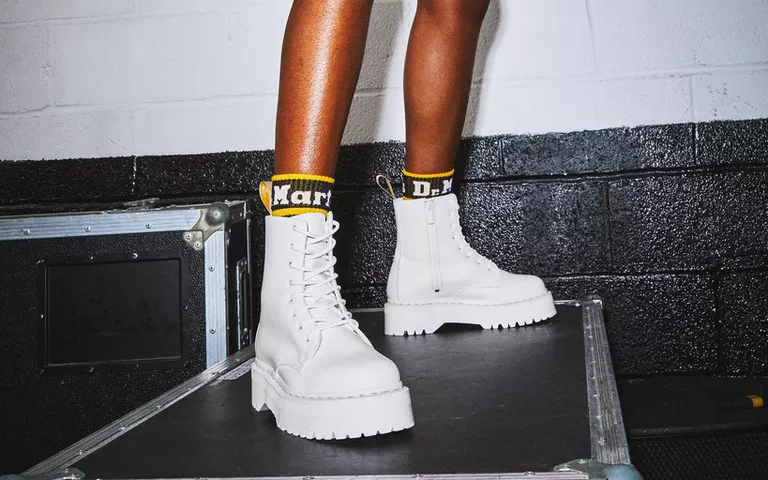Table of Contents
Every year, the world witnesses the massive production of billions of pairs of shoes, a phenomenon that, unfortunately, brings with it a significant environmental impact that is difficult to negligible. Footwear, an everyday consumer item for many, is often the result of production processes that use materials and chemicals that are harmful to the environment. Adhesives and dyes used in their manufacture are only one part of a production chain that often neglects sustainable practices.
Inadequate management and disposal of these chemicals further exacerbates the problem, contributing to a negative impact on soil and water. However, the environmental concern is not just limited to the production stage. Once shoes reach the end of their life cycle, new challenges arise.
Recycling becomes almost impossible, considering the complexity and diversity of the materials used in their production.
In recent years, the situation has further worsened with the advent of so-called fast fashion in the footwear industry. This phenomenon, characterized by the production of fashion items inspired by big brands, but sold at cheap prices and with extremely short renewal cycles, has led to an exponential increase in production and, consequently, in waste associated with low-quality and short-lived products.
The Sustainable Leather Revolution
Many companies choose to use leather because of its longevity, durability, and its association with luxury. The problem of this industry is the generation of an alarming amount of waste, about 50% of the initial raw material. This happens because it often has many natural imperfections that many industries consider unusable. In addition, leather, if disposed of incorrectly, can contaminate the soil and produce harmful gases.
The process of transforming leather into a workable material then involves the use of large amounts of water and chemicals. To avoid this huge damage to the environment, you can recycle unused scraps and leather scraps. This reduces demand and consequently the detrimental impact of the production and processing process.
Scraps can be recovered everywhere: furniture, shoes and old clothing. The skin is then shredded and combined with high-pressure water. Sustainable binding products such as natural rubber and wood bark are added to bind the various shreds. At this point, a roll is obtained, which is machined to achieve specific sizes, colors and textures and is easier for manufacturers to process. The end result looks and feels the same as traditional leather, but is less harmful to the planet.
The only drawback could be the lack of resistance compared to the original material, being an assembly of waste. Sometimes it is easily damaged, scratching in a shorter time than real or fake leather. Despite this, recycled leather is a good product because it comes in many styles and colors, smells and feels like real leather, and is much cheaper.
Some brands have already made this switch to recycled leather. To date, it is used worldwide in the aviation, automotive and public transport sectors for seat upholstery. Southwest Airlines, one of the leading airlines in the United States and the largest low-cost airline in the world, has revamped the leather seat covers of its aircraft. It chose more sustainable materials, so as to reduce the weight of the aircraft and achieve better fuel efficiency, as well as greener flights.

Photo credit: Southwest Airlines Instagram
Nike and the innovative Flyleather
In the lifestyle landscape, environmental awareness has also begun to permeate the choices of brands, which are increasingly opting for sustainable alternatives to traditional leather. This trend, endowed by a growing slice of environmentally conscious consumers, extends to leather goods such as wallets, bags, clothing, and even shoes.
A tangible example of this evolution is Nike, which in 2017 introduced the Flyleather line of athletic shoes. This innovative material, composed of 50% recycled leather fiber and synthetic materials, is produced through a water-powered process. The result is a leather that retains the look, feel and smell of its traditional counterpart, but with abrasion resistance and low weight.
Dr. Martens and recycled leather combat boots
The iconic Dr. Martens brand has also announced a green commitment, planning to introduce combat boots with uppers made from 100% recycled leather in 2024. This decision not only reflects the evolving needs of consumers, who are increasingly oriented towards sustainable products, but also testifies to the desire of many companies in the fashion industry to embrace more responsible practices.

The collaboration between Dr. Martens and Gen Phoenix, also known as Eleather, further underscores this commitment to sustainability. Gen Phoenix is a leading manufacturer of large-scale recycled leather, known for turning leather scraps into a sustainable alternative. Production takes place in the United Kingdom, in Peterborough, with a keen eye on environmental sustainability: the plant is powered by renewable energy and manages to recycle 95% of the water used in the production process.
This initiative not only redefines the perception of fashion, but also paves the way for a more sustainable future for the lifestyle industry.
This investment aligns with our sustainability ambitions to reduce waste, source more sustainable materials, and become a carbon-neutral company by 2040.
Kenny Wilson, CEO of Dr Martens.
Dr. Martens’ commitment to sustainability is nothing new, and the brand has demonstrated a long history of eco-friendly initiatives. Back in 2011, anticipating many current trends, the brand successfully launched a collection of vegan footwear and accessories. This pioneering line, made exclusively from non-animal materials, has achieved considerable success, resonating significantly with the rise of animal activism and growing environmental concerns.

Photo credit: Dr. Martens website
The decision to offer vegan products was an important step for Dr. Martens in responding to the needs of an increasingly aware clientele oriented towards ethical and ecological consumption choices. Anticipation of trends and the ability to adapt to growing consumer concerns have positioned the brand at the forefront of the industry, demonstrating an ongoing commitment to long-term sustainability.
The 2011 vegan initiative, combined with the most recent decision to use recycled leather, clearly illustrates Dr. Martens’ desire to evolve in harmony with the emerging values of society, thus helping to redefine the standards of the fashion industry in the direction of greater environmental and social responsibility.
Surely many are aware of the use of recycled leather in footwear, but how many knew that even the giant Dr. Martens has designed a shoe with this type of material?
You may also be interested in the following articles:

Leather is sustainable and can also be revolutionary
The Ecotan project, which introduced a biocircular tanning alternative to the world of leather, is only two years old, but it has already profoundly changed the industry.

The Evolution of Robust Combat Boots: From Military Tool to Style Icon
How combat boots have conquered the world of fashion while preserving their unmistakable original strength.

The North Face: When a brand succeeds in breaking down a stereotype
Comfort, durability, and sustainability… how The North Face has managed to redefine waterproof thanks to an innovative fabric membrane.











































